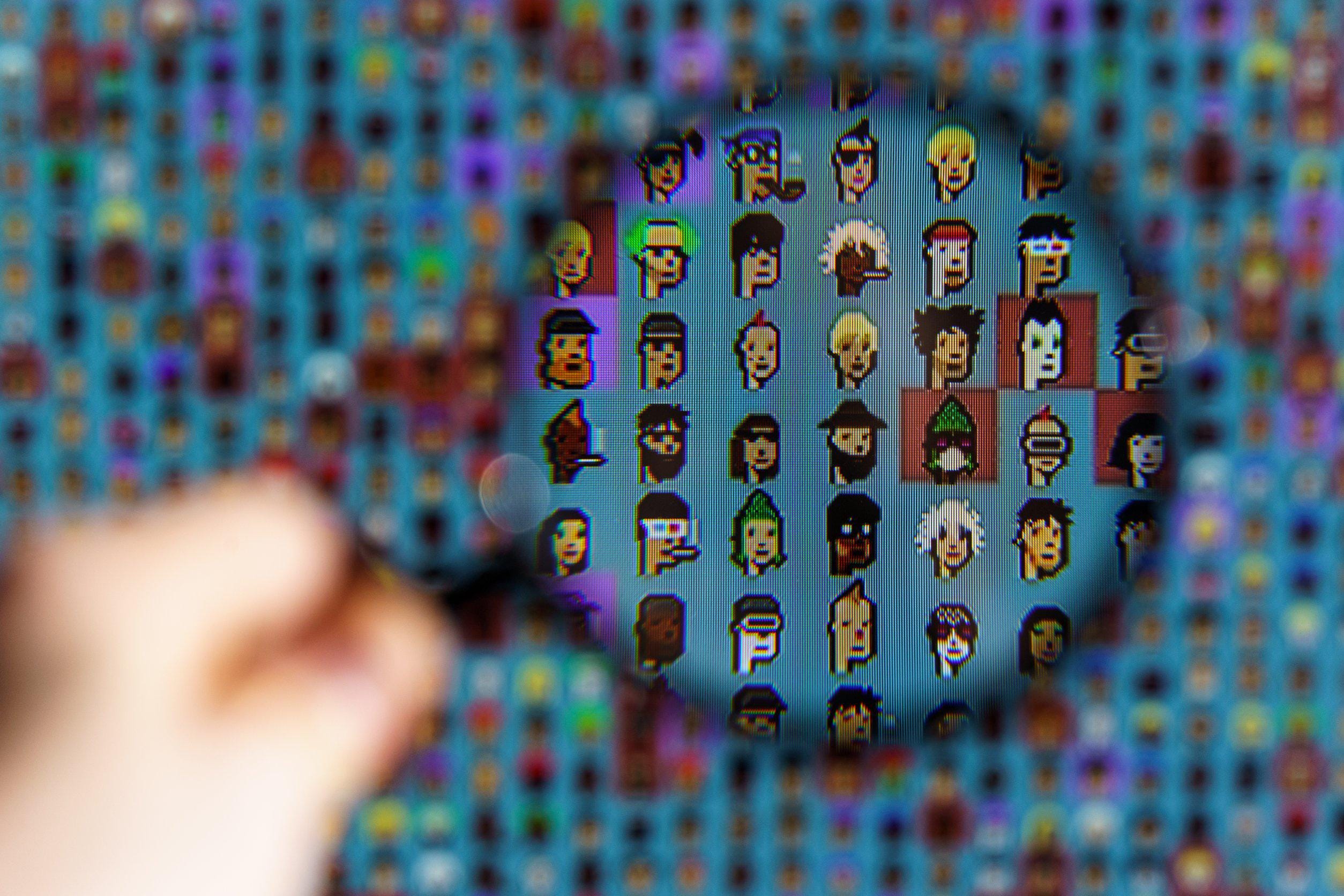Media companies tap creative NFTs for lucrative business models.
Non-fungible tokens, or NFTs, are the cornerstones of Web3, an open, 3D-immersive internet where digital and physical worlds blur and new business models are born. While global consumer brands, including Coca-Cola, McDonald’s, Nike, Gucci, Pringles and Taco Bell, build out their first-mover advantage with marketing initiatives that boost brand “coolness,” media companies are gaining traction with creative strategies that harness NFTs to do more than badge social media profiles. They are anchoring entertainment franchises that are attracting new audiences.
Their approaches teach an important lesson: The real action isn’t in hawking collectibles. It’s in cultivating new communities around valuable IP.
At a basic level, NFTs enable digital assets to become collectible and investible. Themed collections of NFTs continue to make headlines (and money) for creators and traders. Among these, the series of pixelated faces known as CryptoPunks make up 5 of the top 10 largest NFT sales. Likewise, the Bored Ape Yacht Club, a series of 10,000 ape faces, has skyrocketed in popularity, and one even made the cover of Rolling Stone. The limited-edition zine drop last fall sold out within 30 minutes.
It’s not the first time media companies have tapped the digital realm for breakthrough ideas. The 1980s saw the arrival of Max Headroom, TV’s first computer-generated presenter and music DJ. (The fictional AI charter was also snapped up by Coca-Cola to be the face of its “Catch the Wave” campaign.) A decade later and into the 2000s, the first virtual band Gorillaz broke onto the scene with a mix of dub, Latin and punk that would go triple-platinum in the U.S. and the U.K. This year marks the group’s 20th anniversary.
I was reminded of Gorillaz by Conal Byrne, CEO of the iHeartMedia Digital Audio Group, during a recent episode of the CleverTap Engage podcast co-hosted with fellow Forbes writer John Koetsier (you can read John’s article here). [Disclosure: CleverTap retains my services as an online talent and content consultant.] In describing one of iHeartMedia’s recent ventures, he called it “Gorillaz for podcasting.” With this slate of new podcasts, the company aims to cash in on the opportunities to be found at the intersection of digital and traditional media.
In April, top-ranked podcast publisher iHeartMedia purchased the rights to a slew of NFTs, including CryptoPunk #2821, Mutant Ape #10144, World of Women #7147 and #7730, as well as collections from emerging NFT projects. “We started to realize a lot of these are character-based NFTs,” Byrne told me in a follow-up interview. “It became obvious to us that this was content [media companies] could put to work for real business to drive real earnings and reach consumers in new ways.”
iHeartMedia pushes the boundaries of what defines IP and what defines talent.
Determined to find “creative uses for the characters,” Byrne says, the company launched the Non-Fun Squad, the first-ever NFT-based media franchise and a podcast slate centered around the worlds of those Web3 products. iHeartMedia then brought in writers to build backstories and podcast producers and voice actors to bring the characters to life. “We had well-known IP and zero backstory. It was a blank slate.” It was also a chance to break the media mold. “This is really pushing the envelope to pressure test the assumptions we have around what is IP, what is a host, and what is talent,” Byrne later told Axios.
The outcome is Prop Culture, a “weekly Hangout podcast” launched in June that leverages the characters of the NFT collections by creating their “voices” to weigh in on topics ranging from TV, music, crypto, current events and pop culture. And this is just the beginning, Byrne says. “It’s IP—one of the most exciting, biggest potential new pools of IP that has hit the world in a decade—and it can be developed into TV shows, rock brands, or in our case, podcast hosts.”
It’s a playbook other media companies can follow if they choose. “This isn’t like a whole new muscle you have to build,” he explains. “If you are a content company, you’re doing 95% of this now. You just need to rejigger your brain to cover the remaining 5% in a new way on a new platform.”
It’s easy to imagine ways to take “non-traditional characters and develop them into traditional media products,” he explains. For example, a lifestyle media company could tap World of Women NFTs to present relevant content in a compelling way. Or a streaming company could harness collections to develop edgy entertainment.
It boils down to finding the fit and then extending the benefits to the community. It’s a blueprint any media company can follow—and should, Byne says—if they don’t want to miss “the opportunity to build a permanent blockchain-enabled connection with the consumer.”
So, who is the audience for NFTs? If you think it’s Gen Z, a cohort born between 1995 and 2010, you’re only partially right.
This hyper-cognitive generation is innately comfortable in a virtual world. But McKinsey research points out that Gen Z’s desire for products that allow them to express their digital identity is less about ownership and more about access. In contrast, high-net-worth Millennials are more attuned to NFTs for their monetary value. A 2021 survey conducted by global decision intelligence company Morning Consult found that men in this group are the biggest fans and 3x more likely than women to collect NFTs as a hobby or investment.
The demographic most receptive to NFTs is esports fans. It’s also a massive tribe (the community of esports fans globally just crossed the half-billion mark) with a huge appetite for digital content about top games, tournaments and trends. This younger (mostly male) demographic is tough to reach with traditional media, so companies are incentivized to explore Web3 approaches to make the connection.
To engage this audience, upday, a personalized news app and offer created as part of a strategic partnership between publishing house Axel Springer and handset maker Samsung, has tapped the metaverse for new talent.
Jaxon delivers gaming news with attitude.
Jaxon is a Web3 character who serves as the “host” of a destination for gaming news with attitude curated by an editorial team. In many ways, it’s a page from the “Disney/Mickey Mouse playbook,” Aneta Nowobilska, upday Chief Product Officer, tells me in an interview. Already, Jaxon (or someone in a Jaxon costume) makes appearances at gaming events, and fans line up for selfies.
Recent tweaks to the news destination have also significantly boosted audience engagement online and in-app. “We have been able to increase weekly retention by 40% since the beginning of the year,” Nowobilska says. Encouraged by this upday is currently brainstorming ways to bring a “lifestyle element” to the space-themed character. Nowobilska won’t disclose details, but she does hint that merchandise, music videos, and more are now all “part of the continuum” companies can make and monetize when they invest in winning IP.
The real value is upday’s learnings from experimentation, testing and trying out new twists on traditional content. “As we are in the test phase, we are focused on finding out what users’ needs and interests are.” Her most important insight: “Younger audiences want to be part of the content, but they also want to mix with a community. Jaxon is in the middle of both worlds, and that is what makes it successful.”
With the news that Super League Gaming, a global leader in metaverse gaming, and MTV have joined to bring The Video Music Awards Experience on Roblox later this month, it’s easy to imagine how companies across all media can connect audiences and worlds.
And, despite the sci-fi feel of it all, the effort to combine Web3 products and more traditional media products isn’t rocket science. It requires the ability to produce content, cultivate community and innovate monetization models. Much of this work is already underway as media companies work to develop their digital assets into more immersive and relevant news and entertainment. The first step to capturing the Web3 opportunity is being open to it.


